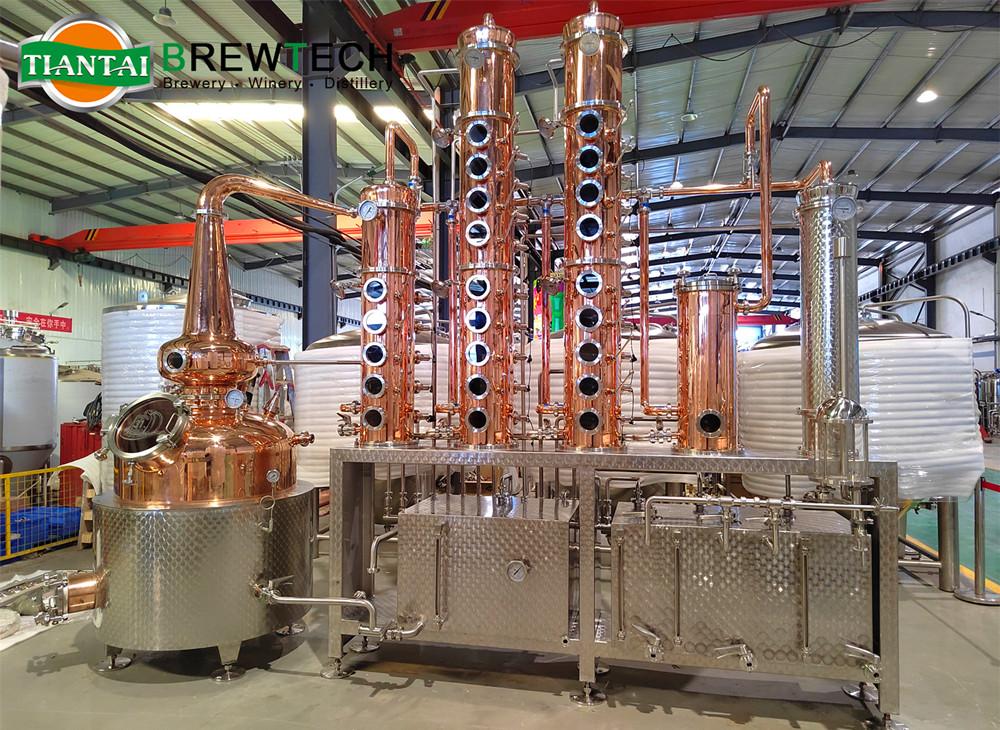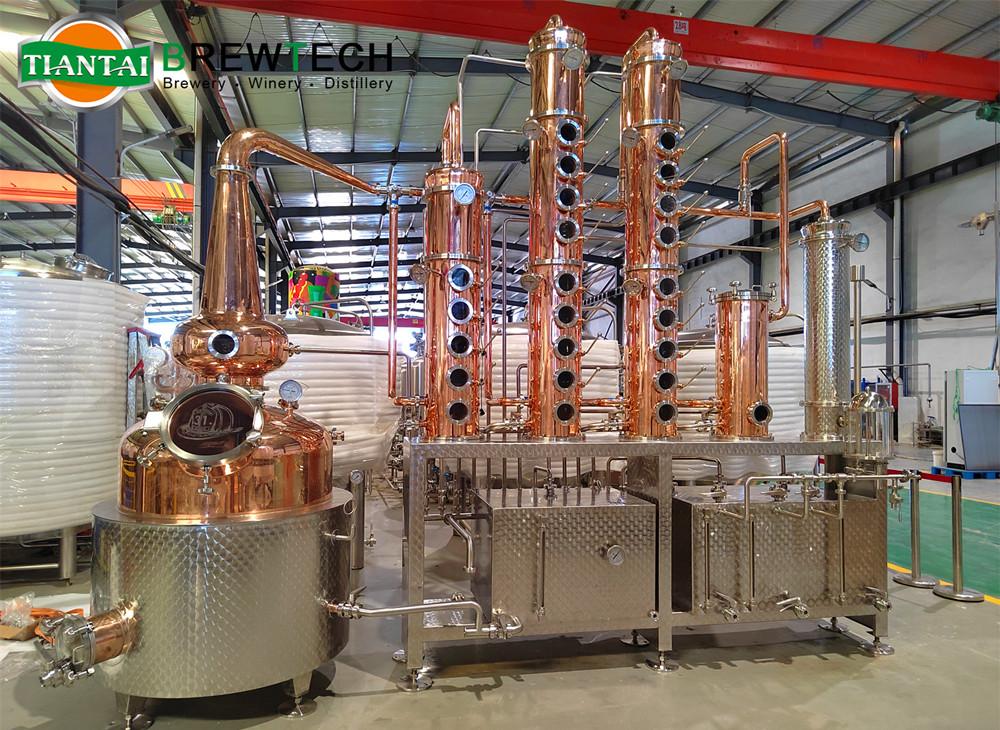
1. Steam Jacketed Heating:
Steam jacketed heating is a popular and widely used method in modern distillery equipment. It involves surrounding the still with a jacket that allows steam to circulate and indirectly heat the contents of the still. The steam is generated in a separate boiler and then transferred to the still's jacket.
Advantages:
Even and controlled heating, reducing the risk of scorching or uneven temperature distribution.
Provides a smoother and more refined flavor profile compared to direct-fire heating.
Challenges:
Requires additional equipment, such as a steam boiler, which can be costly to install and maintain.

2. Electric Heating:
Electric heating is another common method used in distilleries. In this approach, electric heating elements are positioned externally to transfer heat to the still's contents.
Advantages:
Precise temperature control and easy automation.
Clean and energy-efficient, with no direct combustion or emissions.
Challenges:
May have a slower heating rate compared to steam or direct-fire methods.
High energy consumption can be a concern for larger distilleries.
3. Indirect Heating with Hot Water or Oil:
In this method, hot water or oil is circulated through a jacket surrounding the still or through internal coils. The heated fluid indirectly transfers heat to the contents of the still.
Advantages:
Efficient and consistent heating without direct contact between the heat source and the distillate.
Allows for better control over the heating process, resulting in a refined flavor profile.
Challenges:
Requires additional equipment and complex plumbing arrangements.
Careful monitoring of temperature fluctuations is essential to avoid overheating.
The choice of heating method can significantly influence the flavor profile of the spirits. Direct-fire heating alcohol distiller, with its contact between the flame and the still, may impart smoky or charred notes to the distillate, adding complexity and character to certain types of spirits, like whiskey. Steam jacketed heating alcohol distiller or electric heating alcohol distiller tend to produce cleaner, more neutral spirits, making them ideal for vodka or gin production, where the focus is on the purity of the base alcohol.
Contact Information:
Email: [email protected]
Contact Person: Emily Gong



.jpg)


Get In Touch